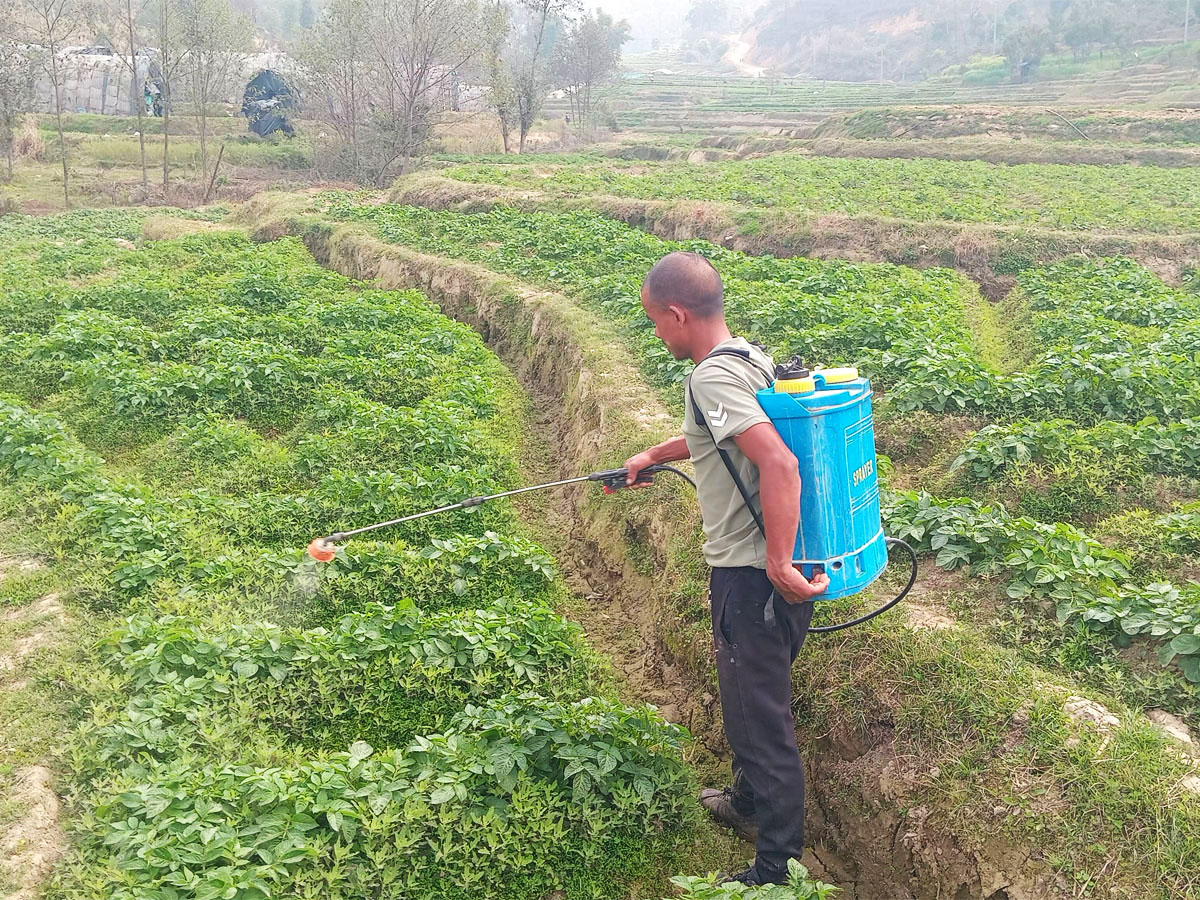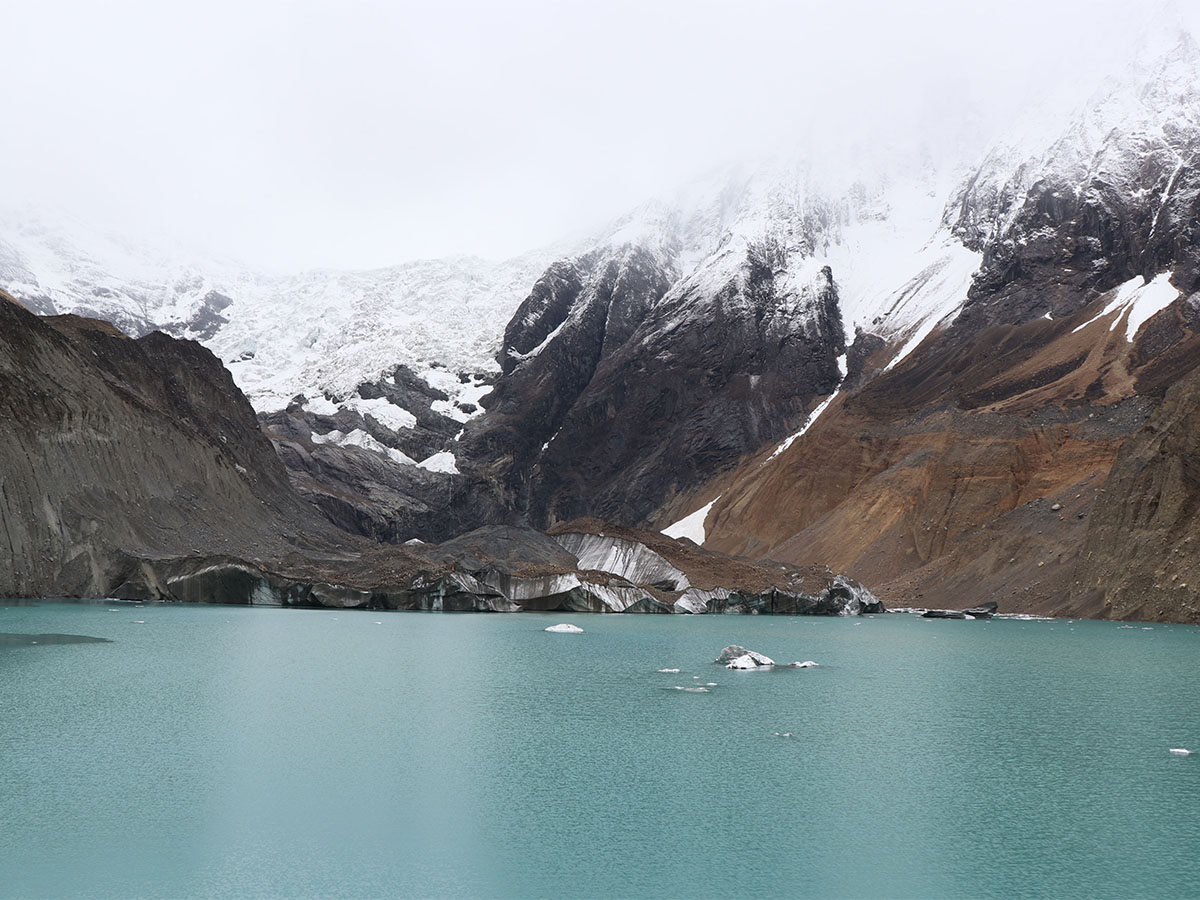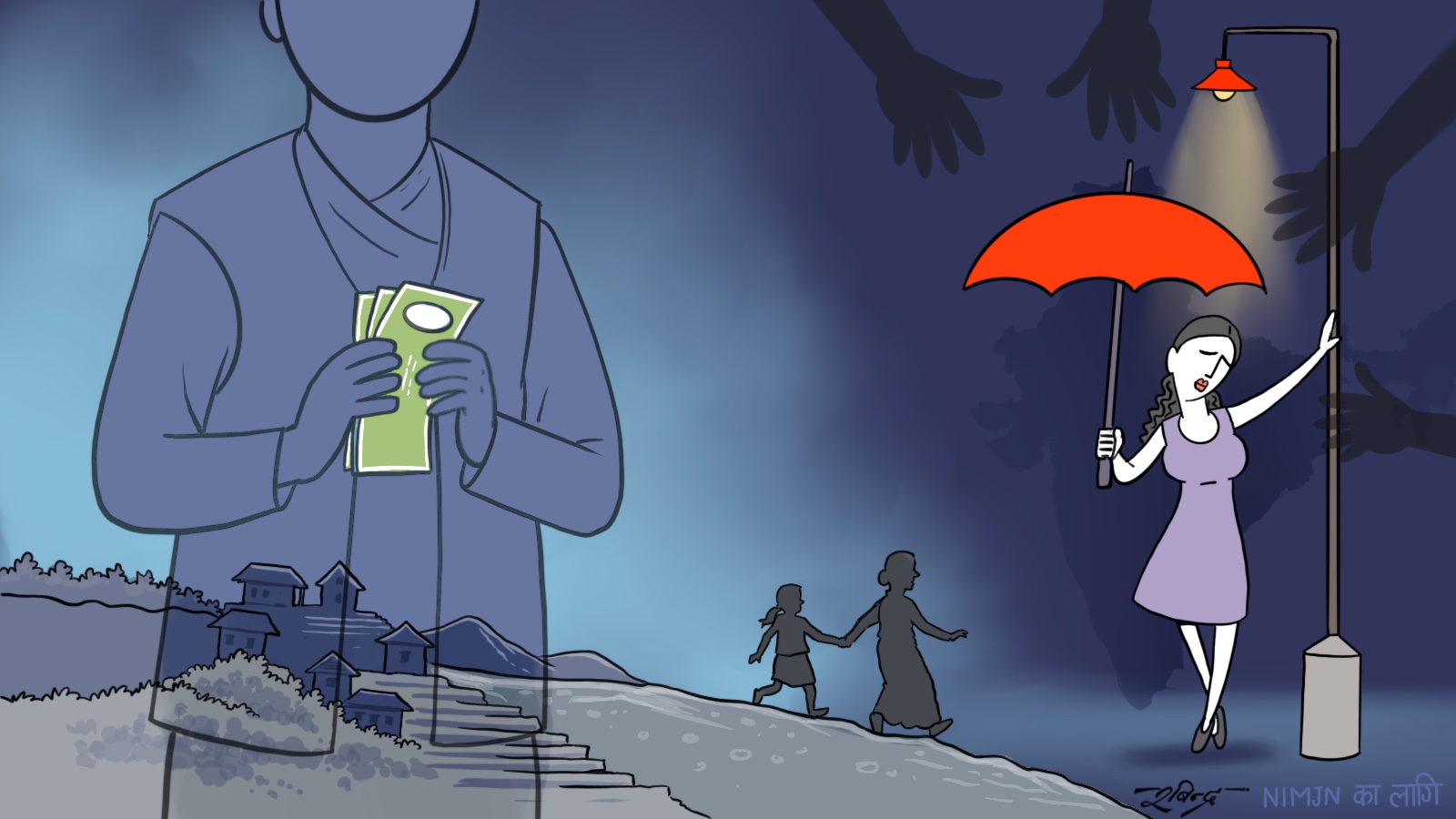Read this story in Nepali: भूकम्प विस्थापितको पुनःस्थापनामा अर्बौँको लगानी, बालुवामा पानी
"Even during the day, jackals howl, birds and mice surround us, and I'm scared to live alone," says Sani Tamang from the Tamang settlement in Neelkantha Municipality-2, Dhading. She is afraid to stay in her own house. After being displaced by the devastating earthquake of 2015, she moved to a communal settlement, but most of the houses there are now empty. However, she remains in the settlement with her sister, Rupa Tamang.
 Forty families from Rubi Valley Rural Municipality in Dhading, who were displaced by the devastating earthquake, were resettled in a communal settlement built in Neelkantha Municipality, Dhading. However, life in the new place was not easy, and within a few months, 39 families returned to their original homes. Now, only Sani's family resides there.
Forty families from Rubi Valley Rural Municipality in Dhading, who were displaced by the devastating earthquake, were resettled in a communal settlement built in Neelkantha Municipality, Dhading. However, life in the new place was not easy, and within a few months, 39 families returned to their original homes. Now, only Sani's family resides there.
"It feels so desolate that I feel a sense of unease. My husband is also away for work, so I keep my sister with me," she says.
Most families could not sustain themselves in the integrated settlement built by the government. Many returned to Rubi Valley after struggling to farm. Bahadur Tamang, who came from Rubi Valley, also locked up his house in Neelkantha Municipality and returned to his old village because there was no cultivable land or source of income. "This is not a desire, but a necessity," says Bahadur Tamang. The house built for him in the integrated settlement has become dilapidated due to lack of occupancy, while he is struggling for shelter in Rubi Valley.
The main reason for Bahadur's family returning to their original home is the difficulty in earning a living. "The government built houses and we are safe, but it became difficult to make ends meet. There was no work to be found," says Bahadur, who stayed in the integrated settlement for only two months.
Sani Tamang's family, however, found land in Neelkantha itself and started farming. That is why this family has remained here. But spending nights in a deserted settlement is not easy. "There are no people in the village. It's scary to live alone. We have no option but to wait for the villagers to return," says Sani.
After the 2015 earthquake, the government, various individuals, and organizations built integrated settlements in different places for the displaced. At that time, those affected by the disaster came to the integrated settlements for shelter, but due to the lack of an environment that could sustain them there, the displaced families are forced to return to their own risky hilly villages.
On one hand, the investment of millions of rupees spent on building integrated settlements where no one lives has become like pouring water in sand. On the other hand, the displaced families are forced to return to the risky villages in the hills.
In 2018, the National Reconstruction Authority (NRA) formulated a working procedure related to the development of integrated settlements. Based on that, a new settlement was built in Neelkantha. The Government of Nepal provided each family with 200,000 rupees for land purchase and 300,000 rupees for house construction. In some places, the government itself acquired land and distributed it.
According to NRA’s data, the government spent 200 million rupees just to build 40 houses in Neelkantha Municipality. In addition to this, further investment was made for physical infrastructure such as roads, drainage, and drinking water reaching the settlement. However, the NRA does not have the integrated data for this.
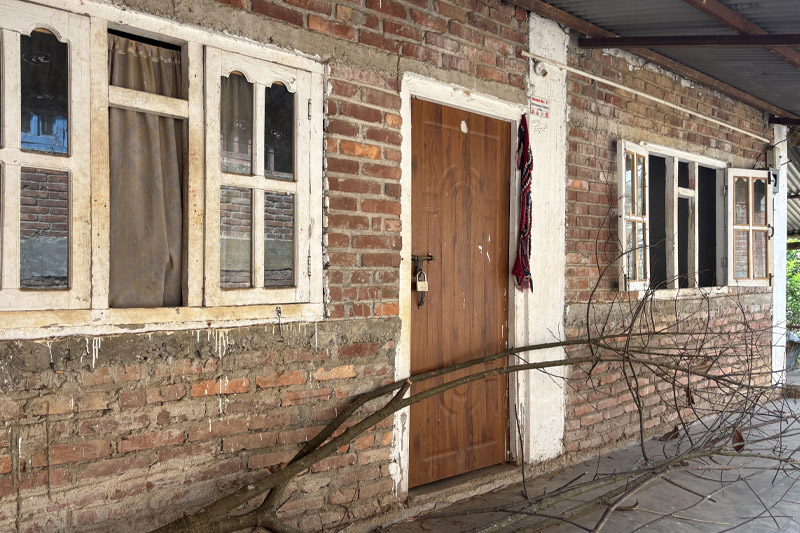
The situation is similar not only in settlements built with government investment but also in those built with private investment. Members of the integrated Tamang settlement built with the help of donors in Bhuwalepani, Ward No. 4 of Jwalamukhi Rural Municipality, Dhading, have also left the settlement.
When we reached that settlement on March 15, 2025, only 13 out of 55 houses had families. All the residents of the remaining 42 houses had already returned to their original homes in Rubi Valley.
Parimaya Tamang, whom we met in the Bhuwalepani settlement, is also returning to Rubi Valley in a few days. Her husband had gone to Rubi Valley to farm. "If we stay here, there is no work, so we keep moving back and forth," she says. "A house alone doesn't provide food."
Arjun Tamang, who mostly lives in Kathmandu, happened to be in the settlement on the day we visited. He has a house in the settlement, but he runs a boutique and mostly stays in Kathmandu, while his family is in Rubi Valley.
His father, who returned to their old home in Kapurgaun, Ward No. 5 of Rubi Valley Rural Municipality, works as a carpenter. "My father has work in the village. He had to stay unemployed here, so he returned to the village," Arjun says. "First comes food, then shelter. That's probably why people couldn't stay in the settlement."
The situation of empty integrated settlements is not limited to the hilly regions; it's the same in the Terai plains. In the integrated settlement of Kumitar in Rapti Municipality-13, Chitwan, about 130 kilometers away from Neelkantha, Dhading, no one lives either.
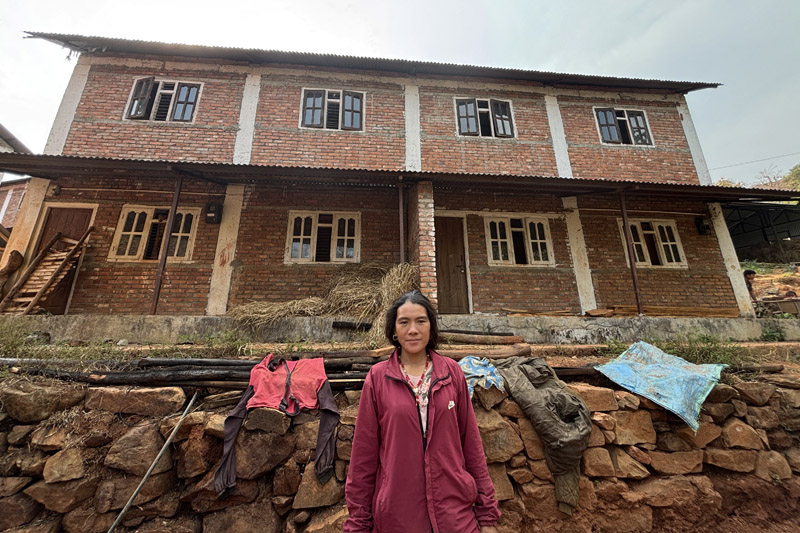
According to Ward Chairman Ashok Kumar Praja, 11 families were relocated to Kumitar from Esikai village near Lothar in Chitwan in 2022.However, they did not prefer to live there. "We are thinking of keeping children from underprivileged families in those houses and having the ward educate them," says Ward Chairman Ashok.
According to Indra Lal Chepang, who returned to his old village from the integrated settlement, their community cannot survive in the new settlement. "All our relatives are here in the village. They plant corn and live here," he says. "They only come down later if they can't find work."
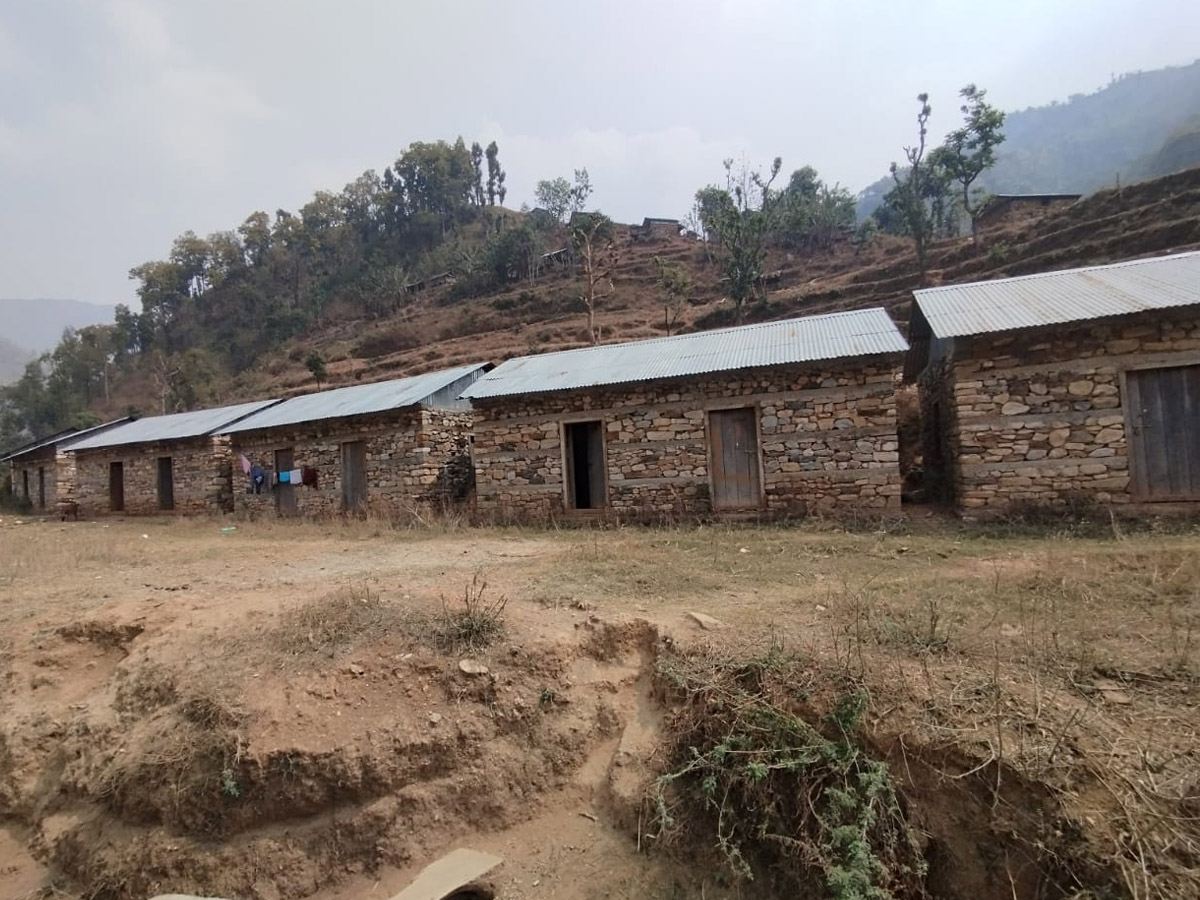
As the practice of relocating settlements continued across the country after the 2015 earthquake, 3,802 houses were built under the leadership of the NRA along with non-governmental organizations. After the dissolution of the then Reconstruction Authority, its remaining work is now being overseen by the Central Project Implementation Unit under the Department of Urban Development and Building Construction. According to this Unit, 3,802 houses have been built so far under the integrated settlement plan, on which the Government of Nepal has spent 1.9 billion rupees.
According to the Unit's Deputy Director, Lila Khatiwada, this expenditure is only the amount given to individuals for houses and land. Apart from this, there is no account of other physical infrastructure and the management costs incurred in relocating the settlements. He says, "At that time, there was only a rush to relocate people for shelter; all other aspects could not be looked into. A lot of work needed to be done on this, and now everything is becoming clear."
Piles of problems
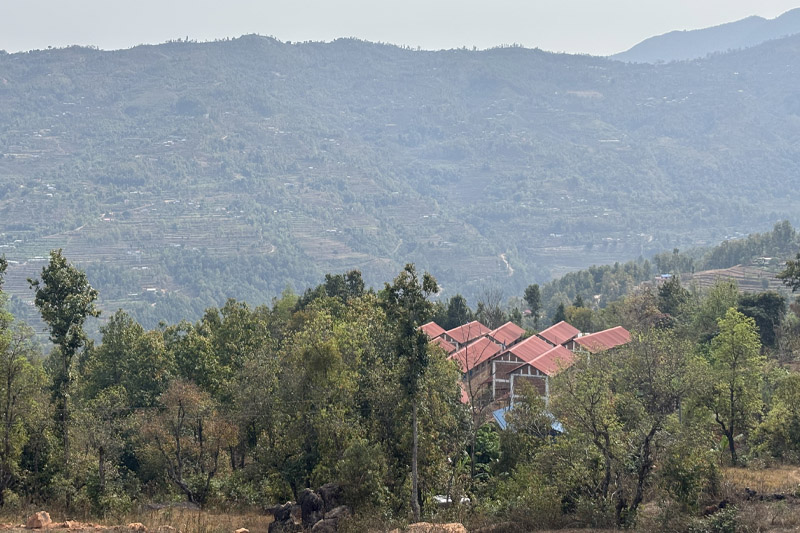
In Bhuwalepani, Ward No. 4 of Jwalamukhi Rural Municipality in Dhading, an integrated Tamang settlement was built with the support of international non-governmental organizations and the coordination of local organizations. Up to 2 million rupees was invested in each house.
Child Haven International had purchased the land to build this settlement. Organizations such as Ka-Nying Shedrub Ling Monastery, Mountaineers for Himalayas Foundation, and The Salvation Army provided support in the construction.
Dinesh Kumar Tamang, the conceptualizer and chief planner of this settlement, had gathered support from national and international organizations.
He was exploring ways to earn a living within the integrated settlement itself, such as homestays, domestic production, handicrafts, cottage industries, soap making, commercial animal husbandry, vegetable farming, and beekeeping.
However, he says that the efforts to involve the settlement residents in income-generating activities were unsuccessful. "We knew that the settlement had to be self-sufficient, and we were planning accordingly," he says. "But then Corona came, and gradually the donors decreased. And the local government also didn't care."
Despite having two-story concrete houses, water, drainage, and a monastery within the settlement, there are other reasons for leaving the integrated settlement in Jwalamukhi and returning to Rubi Valley. Dharma Bahadur Aryal, Vice-Chairman of Jwalamukhi Rural Municipality, says, "The houses are nice, but there isn't even land to spit on besides the house. Also, the Tamang community could not integrate with the new community."
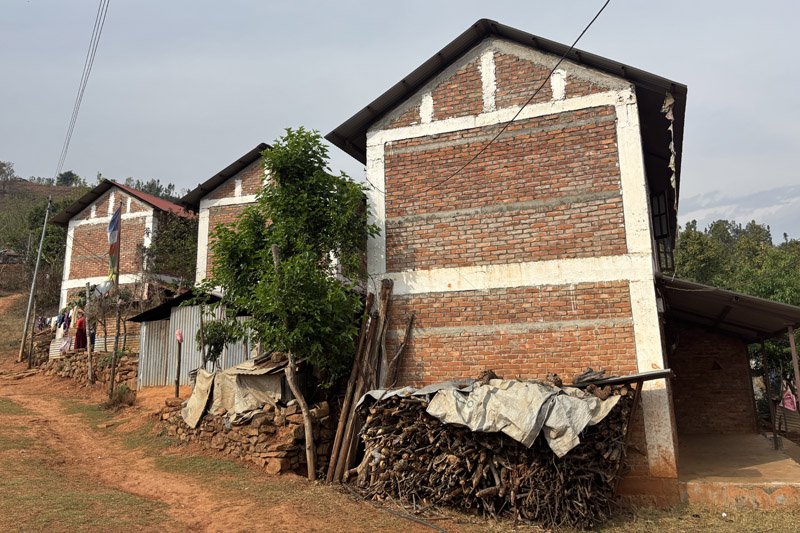
The struggle to integrate into a new culture and society is something Sani Tamang, who lives in the integrated settlement in Neelkantha Municipality, has experienced firsthand. Around this settlement are the villages of Wali Gaun and Rijal Gaun. People from the settlement are even afraid to go to those villages. Moreover, most people in the Tamang settlement do not understand the Nepali language.
An elderly woman from the settlement told Sani that she was even afraid that the villagers would scold her for picking up scattered stones on the road. According to Sani, the elderly woman said, "It feels like they will scold me even for walking, and it feels like they will scold me even for picking up stones from the road."
People from Rubi Valley were also afraid due to their inability to integrate into the new settlement. "People from our settlement wouldn't even come out of their houses, and if any new person came, they would hide even further inside," says Sani, who is familiar with the Nepali language in the settlement. Another reason for disliking the new settlement is drinking water.
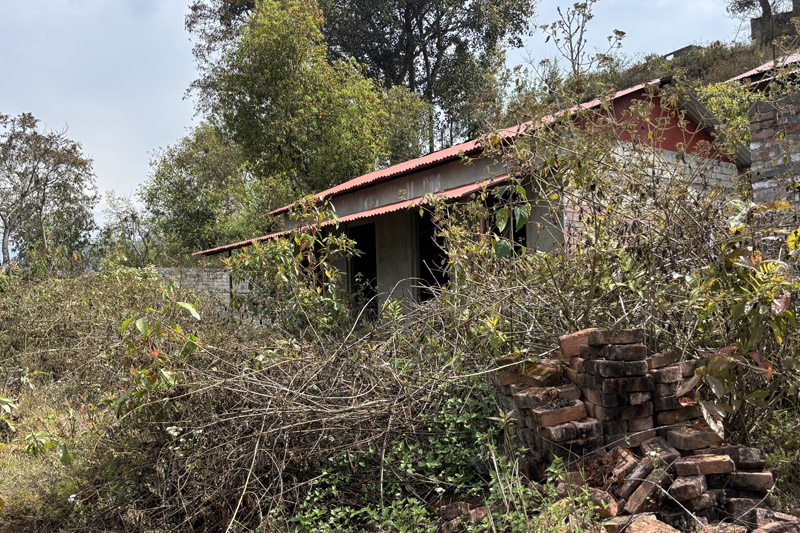
Although some integrated settlements had drinking water arrangement provided by non-governmental organizations, most do not even have water pipes or toilets. Singnam Tamang from Rubi Valley Rural Municipality, who returned from the Tamang settlement in Neelkantha Municipality, says, "The 300,000 rupees provided by the government was not enough even to build the house. There wasn't a single tap in the settlement, and we couldn't build one ourselves. We had to go up to the village to fetch water."
The water problem is not limited to the settlements in Dhading. The 573 houses built in Gumsi Pakha to resettle the residents of Laprak in Gorkha also face the same issue.
The Non-Resident Nepali Association (NRNA), in collaboration with the NRA, had built houses for the earthquake victims in 2021. But now, only 50 houses are occupied there.
Here, the non-governmental organization CARE Nepal had brought drinking water from 19 kilometers away at an investment of 60 million rupees. However, the pipes burst within a few months of bringing the water, and the supply stopped. Since then, the residents of the settlement have complained about having to walk for an hour to fetch water from a well.
Furthermore, this integrated settlement only has houses. There are no sheds for livestock, no land for vegetable gardens, no neighbors, and no opportunity for mutual help. There are no relatives nearby to celebrate festivals with, and no shrines for deities. Therefore, even though Parimaya Tamang came to a settlement near the district headquarters of Dhading from Kapurgaun, a very remote village in Rubi Valley Rural Municipality, she feels like returning to her old village.
A single house. Three children. The only work she knows is labor. Even that is not available, and she doesn't want to live in a place where she can't educate her children or get medical treatment when they are sick, she explains.
Her problems have worsened since her husband, Ril Bahadur, became unwell three months ago. Parimaya says, "Here, even if someone gets sick, they might die. All our relatives are in the village. Even those who remained have all gone back there."
Flawed plan
"The fact that people are not living in the settlements built for the management of disaster victims indicates a failure of the plan," says planning expert Kishor Thapa. He states that the investment made by the state and other organizations has gone to waste due to problems from the planning stage to the management.
Prof. Dr. Govind Pokharel, former Vice-Chairman of the National Planning Commission and former Chief Executive Officer of the National Reconstruction Authority, agrees that there are problems with the integrated settlement plan itself. According to him, this plan only focused on providing land and building houses.
He concludes that such settlement plans, rather than just focusing on individual families, needed to integrate the local residents into economic activities. The failure to do so led to the plan's lack of success. Prof. Dr. Pokharel says, "We were carried away by emotions. This plan failed because of the imbalance between the feelings of the general public and ad-hocism."
Pokharel cites the resettlement of squatters as an example of how people cannot be sustained by simply building large buildings. The then Prime Minister Dr. Baburam Bhattarai had introduced an apartment construction project in 2011for the squatters living on the riverbanks of Kathmandu.
Accordingly, apartments were constructed in 2014 at a cost of 109.62 million rupees and handed over to the Department of Urban Development and Building Construction. However, the squatters did not come to live there, and the apartments remain empty to this day.
Food, shelter, and clothing are the three basic needs of people, but food is the most important. Pokharel emphasizes that the government should focus on providing long-term livelihood solutions rather than just temporary shelter.
Researcher and urban planning expert Sanjay Upreti, who has studied and researched integrated settlement plans, concludes that the preliminary preparations for formulating the integrated settlement plan were insufficient. Immediately after the rescue and relief work following the 2015earthquake, preparations for the construction of integrated settlements began. The private sector started building such settlements from 2016itself. However, he says, the problem arose because the newly established NRA at that time had no clear understanding of what an integrated settlement should be like.
As integrated settlements were being rapidly constructed, the integrated settlement plan was formulated in 2018. This plan heavily focused on physical infrastructure such as houses, roads, and bridges. No plans were made to develop sources of income for the people living in the settlements. "Therefore, by the time the authority finished building the settlements, the people from those settlements had already returned to their old places," says Sanjay Upreti, who is also a professor at Pulchowk Engineering College.
A research paper titled ‘Long-Term Study of Post-Disaster Recovery in Nepal: Insights Gained for Broader Reconstruction’, published by the Multidisciplinary Digital Publishing Institute in 2025, shows that the attraction of socially and economically backward people towards integrated settlements has been gradually decreasing.
A study of one integrated settlement in Nepal showed that the residents' satisfaction decreased from 3.27% to 2.33% within a short period.
A study conducted by Pulchowk Campus, under the Institute of Engineering Studies at Tribhuvan University, titled ‘Residential Satisfaction of Post-Disaster Resettled Communities: A Study of Thakle Integrated Settlement’, evaluated the residential satisfaction of 30 families. It concluded that the plan to meet their physical, social, and cultural needs had failed. Regarding the design of the local residents' houses, it stated, "There are also inconsistencies between the actual needs of the locals and the houses provided."
The article titled ‘Exploring Place Attachment: Insights from Post-Earthquake Resettlement Planning in Gorkha, Nepal,’ published in the Nepal Geographical Journal in 2024, discusses the Panipokhari integrated settlement in Dolakha. A study of the 56 families in this settlement, built for the Thami community, found that they left due to the lack of facilities such as open spaces, kitchens, gardens, and cowsheds. Moreover, weak social relationships within the settlement also led to security risks.
In such settlement relocations, even if local residents show support during a disaster, their situation changes after the disaster. As this is also related to their social life and income generation, even if villagers ask to be taken to a safe settlement during a disaster, the state must study the matter thoroughly.
"Instead of implementing such billion-rupee plans during a disaster, there should be pre-disaster planning and preparation for such things," says Sanjay Upreti. "In our country, there is a tendency to think only after a disaster, and this situation is a result of that."
Sushil Gyewali, the then Chief Executive Officer of the National Reconstruction Authority, says that the time ran out while preparing for the management and handover of responsibility for these settlements. The Authority, formed on December 25, 2015for a five-year term to reconstruct structures damaged by the earthquake, had its tenure extended by one year until December 24, 2021.
He explains that while the Authority provided land and built houses during the implementation of the integrated settlement plan, he made efforts to place the subsequent responsibility on the provincial and local levels. "The government does it once. The rest is to be done by the local levels. The Ministry of Urban Development also didn't work quickly to transfer responsibility on this matter," says Gyewali. "It's also because everyone feels that the federal government, having done it once, should always provide all the alternatives and look after everything."
Planning expert Thapa emphasizes that the responsibility for such plans should lie with the local levels themselves. He says, "The inability of local levels to provide support from the planning stage onwards is another weakness. Plans should not be made this way."
Off the standard
The ‘Working Procedure Regarding the Development of Integrated Settlements (2018)’ has adopted a policy of assessing the condition of at-risk settlements and ensuring safe habitation in the existing location as much as possible. It mentions relocating only those families for whom displacement is necessary. Geological conditions and physical, social, and economic infrastructure are considered the main bases for identifying settlement sites.
Standards have also been set for roads, drinking water, drainage, open spaces, plots of land, waste management, schools, health services, and building construction.
However, these standards have not been met in most settlements. Local residents face problems because basic facilities like health services, drinking water, and schools are not nearby. Similarly, most houses are found to be unsuitable for joint families to live in and for storing food grains.
The challenges in settlement development have been increasing due to the failure to conduct social, economic, cultural, and geographical studies in the initial stages of planning. The government readily approved designs that ignored local needs and the long social history of the community. As a result, the newly established settlements did not align with the local way of life, traditions, and needs. Furthermore, the government did not even conduct proper studies to relocate settlements to safer locations within their original areas.
Although the participation of local communities is considered mandatory in policy-making for the development of integrated settlements, elected officials have felt a lack of this in practice. The 2018working procedure mentions collaboration with local levels in physical construction, land development and distribution plans, and budget transfer. However, elected officials complain that the unilateral actions of the then National Reconstruction Authority dominated even in this aspect.
According to Dhwaj Bahadur Gurung, the Ward Chairman of Neelkantha Municipality-2, the necessary discussion and coordination with the local level regarding the project were weak. Even now, the local level is unaware of the number and condition of families coming to reside in the settlement, he claims. "They didn't even consult us. We have to count the rooftops to know how many people have been relocated to the settlement," he says.
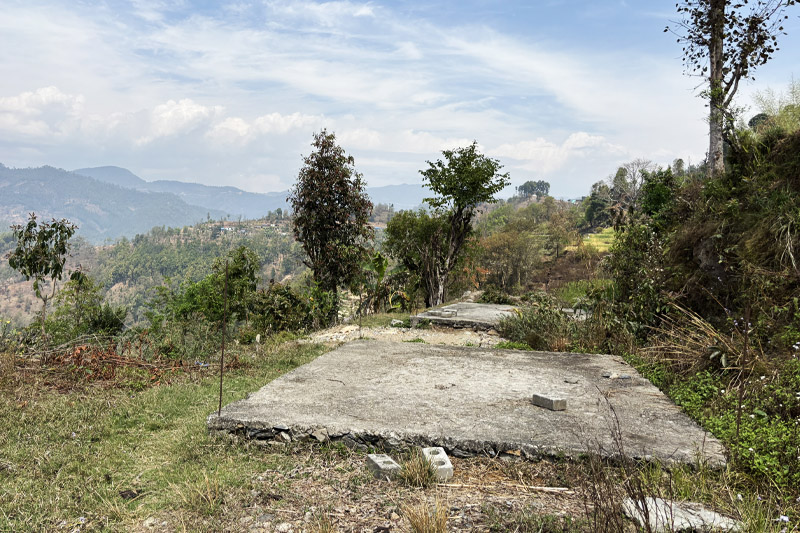
According to him, due to the lack of coordination, even when some people took the 300,000 rupees allocated for building houses under the integrated settlement plan but did not build them, no one paid attention.
In the Tamang settlement of Neelkantha, many houses are incomplete. Some have only laid the foundation, while others have not even put on the roof. Some have been under construction for a long time, causing the doors and windows to become dilapidated. Ward Chairman Gurung says, "Payments were made based on the engineer's assessment, but no one came to monitor. Due to the lack of coordination, state property has been misused and wasted."
What now?
While introducing the Integrated Settlement Development Plan (2018), the government had not imagined that the targeted locals would refuse to live in safe housing. However, according to Jhappar Singh Bishwakarma, the then Deputy Project Director of the National Reconstruction Authority, it became apparent within two years of the plan's implementation that it would not yield the expected results. After that, he says, the concept of providing financial assistance while suggesting safer locations, rather than buying land and resettling the locals, seemed more appropriate.
"By then, more than 2,000 houses, both private and government-built, had already been constructed, and an additional 1,000 were under construction. Therefore, it was not possible to suddenly stop the plan," says Bishwakarma.
According to Chandra Bahadur Shrestha, a member of the then Executive Committee of the Authority, the government of Nepal pressured the Authority to relocate settlements after the 2015earthquake. He says that the work of relocating settlements was started without much thought because the Government of Nepal repeatedly pressured them to at least provide a roof over the heads of the affected families. He says, "This plan would have been successful, but the Government of Nepal did not want to spend on anything other than building houses, and there was also a lack of budget."
When the old plan failed to deliver effective results, the government introduced the new ‘Private Housing Reconstruction and Rehabilitation Working Procedure for Disaster Victims (2020)’.
Under the new working procedure, the government does not directly buy land for the victims. Instead, it provides financial assistance of up to 300,000 rupees, allowing the affected individuals to choose and reside in safe locations themselves. However, the selected land is approved only after geologists from the National Disaster Risk Reduction and Management Authority have assessed it.
Dijan Bhattarai, spokesperson for the National Disaster Risk Reduction and Management Authority, says that the new working procedure, brought after reconsidering the failure of the old plan, is now effective. "Providing financial assistance to the affected instead of the government buying land, increasing the involvement of local levels, and effective monitoring are the good aspects of the current approach," he said.
According to him, 352 houses have been built under the new plan so far. He claims that those who have been resettled have not abandoned their residences.
Regarding the houses being built under the current new policy, planning expert Kishor Thapa says that the problem of rehabilitation will not be solved by merely constructing houses. According to him, local levels must connect the resettled people with economic activities and employment. However, unlike the previous approach of relocating entire settlements, those who have been resettled now choose places according to their convenience.
Suggesting that the local level should become the primary guardian when relocating to a new place, planning expert Thapa says, "Programs should be introduced that treat them like new members of their own community and ensure their sustainable future. Doing so will also provide relief to the residents of the old integrated settlements."
Local levels have a key role to play to make such plans successful. Planning expert Thapa says, "If local residents do not live in those houses, then some other useful thing can be created there." According to him, local levels need to consider this.
Please adhere to our republishing policy if you'd like to republish this story. You can find the guidelines here.

